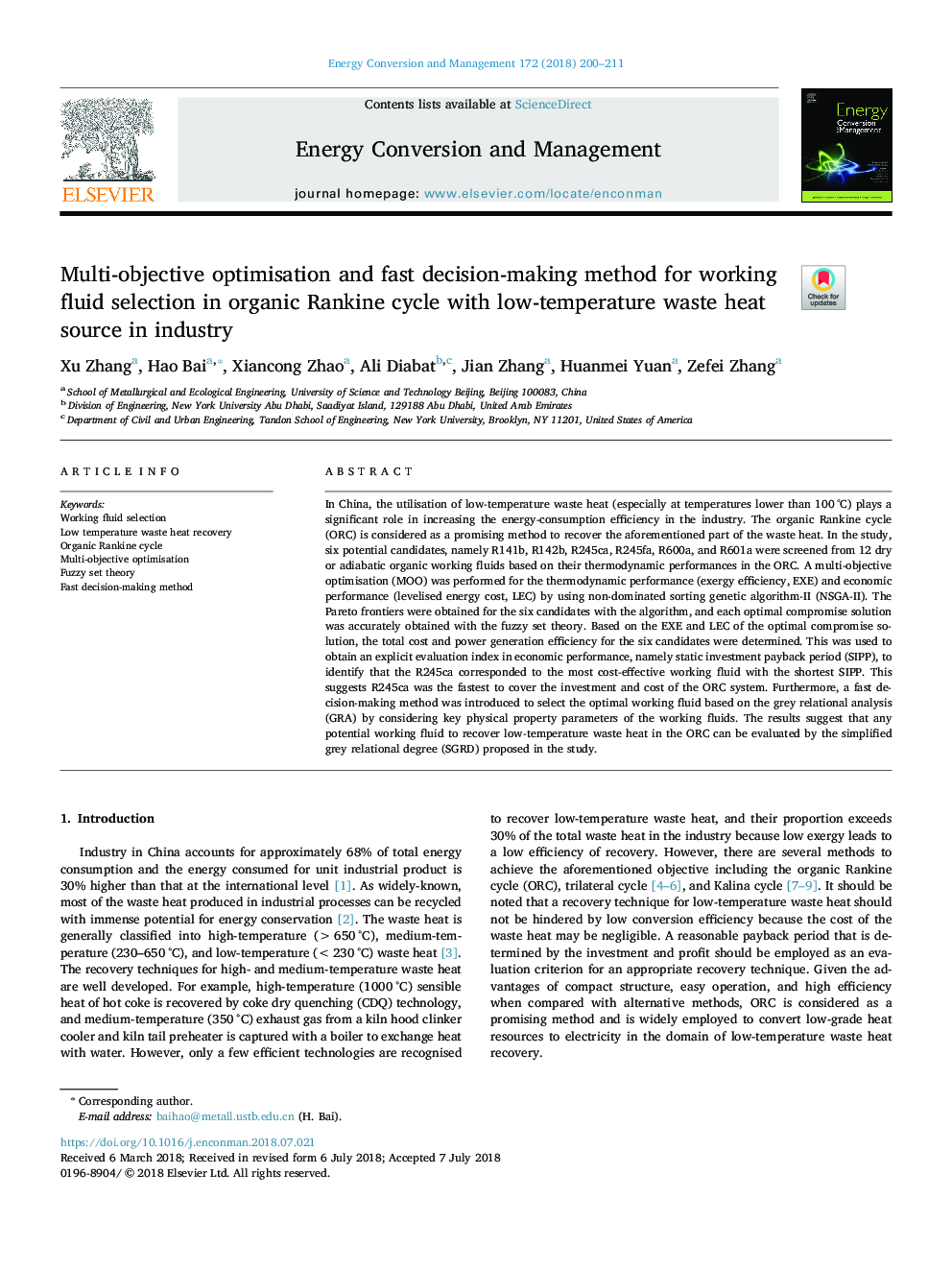| Article ID | Journal | Published Year | Pages | File Type |
|---|---|---|---|---|
| 7157918 | Energy Conversion and Management | 2018 | 12 Pages |
Abstract
In China, the utilisation of low-temperature waste heat (especially at temperatures lower than 100â¯Â°C) plays a significant role in increasing the energy-consumption efficiency in the industry. The organic Rankine cycle (ORC) is considered as a promising method to recover the aforementioned part of the waste heat. In the study, six potential candidates, namely R141b, R142b, R245ca, R245fa, R600a, and R601a were screened from 12 dry or adiabatic organic working fluids based on their thermodynamic performances in the ORC. A multi-objective optimisation (MOO) was performed for the thermodynamic performance (exergy efficiency, EXE) and economic performance (levelised energy cost, LEC) by using non-dominated sorting genetic algorithm-II (NSGA-II). The Pareto frontiers were obtained for the six candidates with the algorithm, and each optimal compromise solution was accurately obtained with the fuzzy set theory. Based on the EXE and LEC of the optimal compromise solution, the total cost and power generation efficiency for the six candidates were determined. This was used to obtain an explicit evaluation index in economic performance, namely static investment payback period (SIPP), to identify that the R245ca corresponded to the most cost-effective working fluid with the shortest SIPP. This suggests R245ca was the fastest to cover the investment and cost of the ORC system. Furthermore, a fast decision-making method was introduced to select the optimal working fluid based on the grey relational analysis (GRA) by considering key physical property parameters of the working fluids. The results suggest that any potential working fluid to recover low-temperature waste heat in the ORC can be evaluated by the simplified grey relational degree (SGRD) proposed in the study.
Related Topics
Physical Sciences and Engineering
Energy
Energy (General)
Authors
Xu Zhang, Hao Bai, Xiancong Zhao, Ali Diabat, Jian Zhang, Huanmei Yuan, Zefei Zhang,
